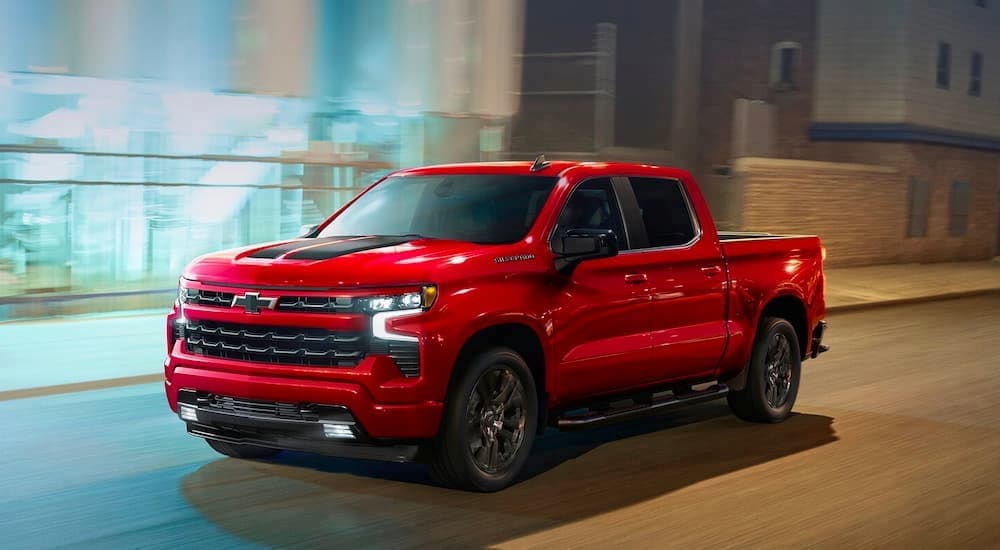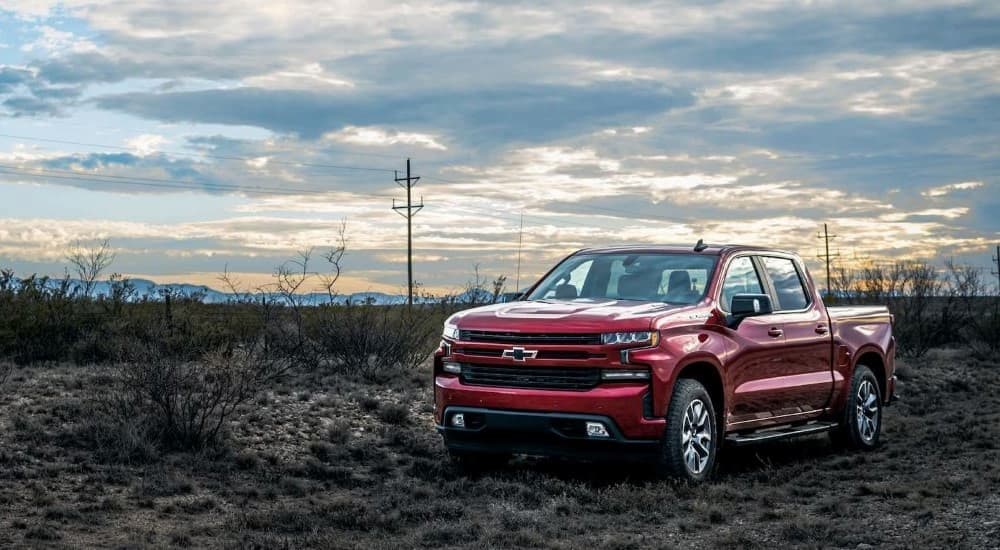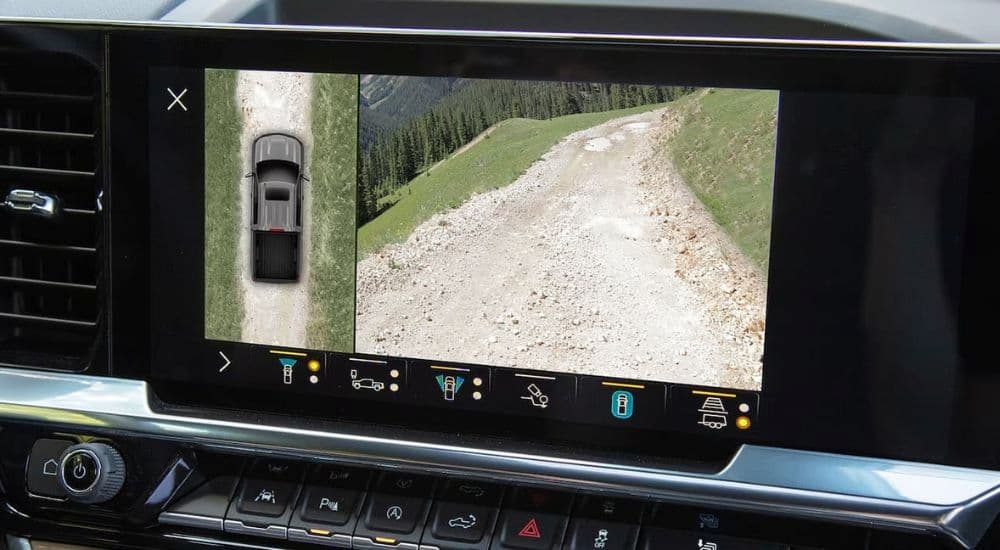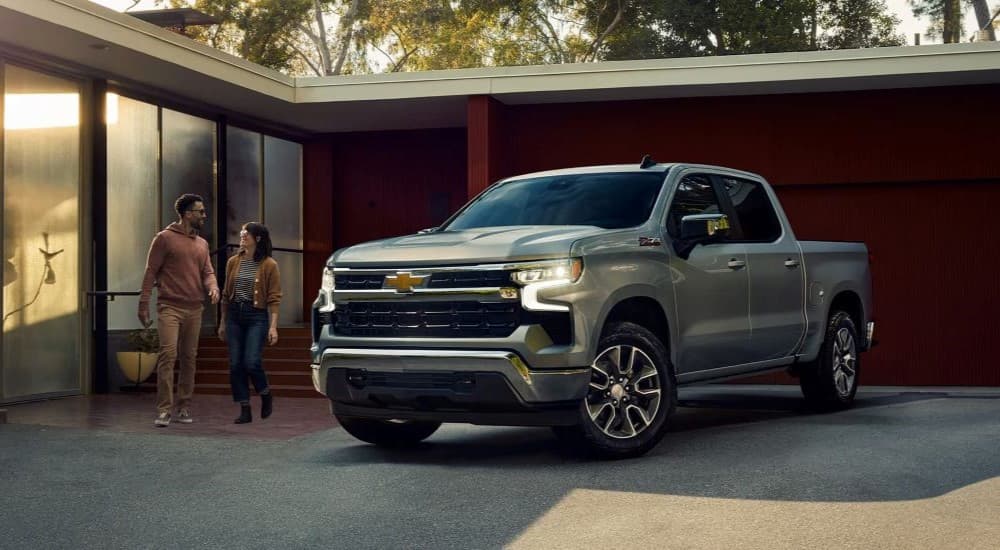Safety features are essential to save lives, avoid accidents, and keep injuries to a minimum. Over the past few years, millions of dollars have been spent on automotive safety alone. From the humble beginnings of the seat belt all the way to the most modern driver-assist features, Chevrolet has been at the forefront of the safety movement.
Not only can automotive safety save lives, but safety features also increase customer trust. When shopping at a Chevy Silverado dealer, it’s no longer just about the engine or the towing capability. Drivers also want to know about the protective features Chevrolet offers. Continue reading to learn more about the history of vehicle safety and what features are available in the Silverado line.
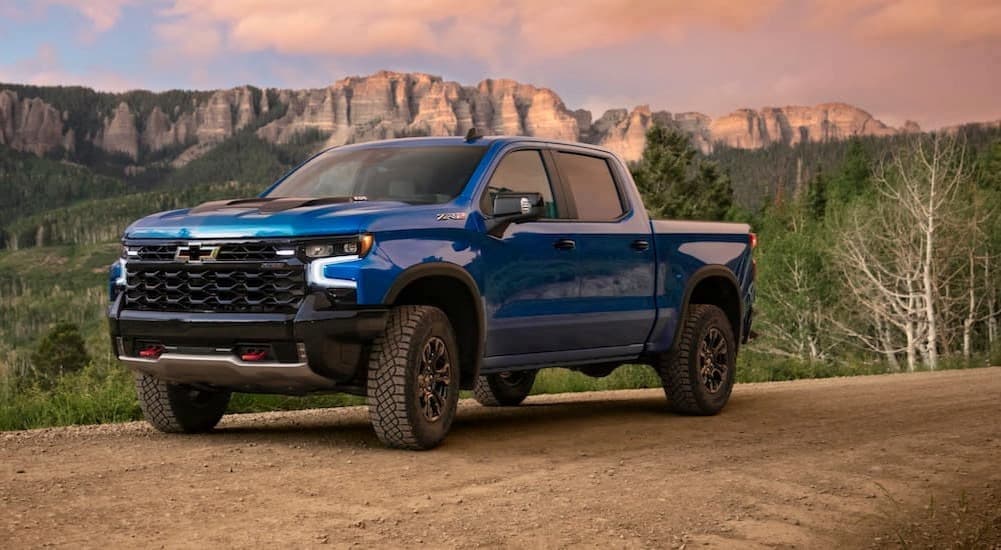
Vehicle Safety History
You might be surprised to learn that vehicle safety began in 1885 with the patent of the first seat belt. This was followed a few years later by the creation of statewide traffic laws in 1901. Connecticut was the first state to implement such laws, which put a limit on speed in particular. Those first speed limits were 12 mph in town and 15 mph in the countryside. Road safety continued to improve with the first modern three-color traffic light by William Potts in 1920.
However, it wasn’t until the 1950s that current three-point seat belts were made. When Volvo engineer Nils Bohlin created the feature in 1959, it changed the impact of an accident by spreading the force of a crash across the chest and hips, decreasing the impact of injury during a crash. Other safety features followed the three-point harness, all of which are still relevant today.
Crumple Zones
In the 1960s, automotive manufacturers took a deeper look at how vehicles reacted in crashes. This research introduced the idea of “crumple zones.” Much like how the seatbelts spread the impact of the crash for drivers and passengers, “crumple zones” were made to receive and spread out the force of a collision. These zones are typically at the front and back end of vehicles and help protect passengers by reducing the force transmitted to the passenger compartment when the car hits something.
Laws and Regulations
During this time, the first Federal Safety Standards for cars were also established, which put the importance of safety at the top of manufacturers’ list of priorities when developing and redesigning their vehicles. The National Highway Traffic Safety Administration (NHTSA) was founded shortly after in 1970. The NHTSA is in charge of lowering the number of deaths, injuries, and economic losses caused by car accidents. This was, and still is, accomplished by setting and enforcing safety performance standards for motor vehicles and equipment and by providing State and local governments funds to run effective local highway safety programs. The NHTSA also investigates safety flaws in motor vehicles, promotes the use of safety features, and gives drivers information about motor vehicle safety issues.
Airbags
Speaking of airbags, did you know the first airbags were considered in the 1950s? Airbags add another layer of safety to seat belts during a crash. They fill with air quickly when the car hits something, creating a padding effect that reduces the impact for you and your passengers and lowers the risk of serious injuries. Although they were initially explored many years earlier, airbags did not become mandatory until 1998. However, Chevy introduced an airbag-equipped 1973 Impala for a fleet purchase by the government and continued to research the effect of this first airbag for twenty years with successful results.
Anti-Lock Brake Systems
The invention of Anti-Lock Brake Systems (ABS) at the end of the 1960s was a big step forward for car safety. By adjusting the amount of force applied to each wheel, ABS lowers the chance of skidding and makes it easier for you to control the vehicle. Since its inception, this technology has helped decrease the number of accidents that happen when control is lost.
Electronic Stability Control
Along with Anti-lock Brake Systems, Electronic Stability Control (ESC) system is another important safety improvement. This feature, which came out in the late 1990s, keeps you from losing control of your car when making quick turns or when the road is wet. By constantly checking the speed of the vehicle, the turning angle, and the speed of each wheel, ESC can selectively apply the brakes to specific wheels to keep the car stable.
Driver-Assist Features
Driver-Assist features have come a long way in the past few years. These systems use advanced algorithms and sensors like radar, cameras, and sonar to make driving safer. Automotive manufacturers like Chevrolet have introduced features like Lane Departure Warning, Side Blind Zone Alert, Forward Collision Alert, Adaptive Cruise Control, and Automatic Emergency Braking. These technologies make it easier for you to avoid crashes and add another layer of safety.
Additionally, these features have focused on protecting those outside the vehicle with features like Front Pedestrian Braking. As automakers continue to strengthen the safety of their cars, they’re also looking at autonomous driving, vehicle-to-vehicle communication, and other cutting-edge ways to make the roads safer for everyone. With ongoing efforts to reduce accidents and save lives on the road, it’s clear that safety continues to be a priority.
2023 Silverado 1500 Safety Features
Chevy has been a leader when it comes to developing and implementing safety features for its lineup of vehicles, including its flagship Silverado pickup truck, which received an NHTSA 5-Star Overall Safety Rating in 2023. The following is a list of some of the features you can expect when choosing the 2023 Chevy Silverado 1500 as your next vehicle. Depending on the model and trim, these features might be standard or optional.
HD Rear Vision Camera: This system adds an upgraded high-definition camera that is displayed on the 13.4-inch central infotainment screen when backing up to ensure there is nothing behind you. It can also help you when parking.
Teen Driver System: This system allows you to activate certain features when your teen is driving your Silverado, ensuring they’re as safe as possible on the road. You can set specific limits for audio volume and speed. The Teen Driver System will also delay their ability to shift the vehicle out of Park if their seatbelt is not engaged. The system is set up through the infotainment system using a specific key fob.
Forward Collision Alert: This system alerts you to potential collisions with both audible and visual warnings, allowing you to respond and effectively apply your brakes. The system works under 50 mph during daylight hours when the cameras can function more effectively.
Automatic Emergency Braking: In conjunction with other safety features, this system applies effective braking even if you are unable to react quickly enough to avoid a collision.
Lane Keep Assist with Lane Departure Warning: While driving, cameras monitor your placement in the lane and sense whether you’re swaying to one side or another. When a departure from your lane is noticed, the system sends a nudge to the steering wheel to help you react appropriately and center yourself once again. The system is deactivated when the turn signal is on.
Lane Change Alert with Side Blind Zone Alert: No matter the design, all vehicles have blind spots. With this safety feature, you get alerts when a vehicle is in one of those blind spots so you can navigate through traffic more efficiently.
Rear Seat Reminder: This system provides an alert, reminding you to look in the rear seat before exiting your Silverado. This is particularly useful in larger crew cab models.
Adaptive Cruise Control: Adaptive Cruise Control allows you to maintain a safe distance between you and the vehicle in front of you, providing you time to respond if there is a sudden change in the flow of traffic.
2023 Chevy Silverado 1500: Your Choice for Safety and Innovation
It’s no secret that safety is a focus for both automobile manufacturers and drivers. In the past few years, many advancements have been made, and as Chevrolet looks to the future, its engineers are hard at work enhancing an already impressive lineup of safety features. Not only does Chevrolet provide an array of safety enhancements, but you also get the history and durability of a brand that has stood the test of time. If reliability, safety, and top-notch performance are on your list of must-haves for your new vehicle, it’s time to consider what the 2023 Chevy Silverado offers.
